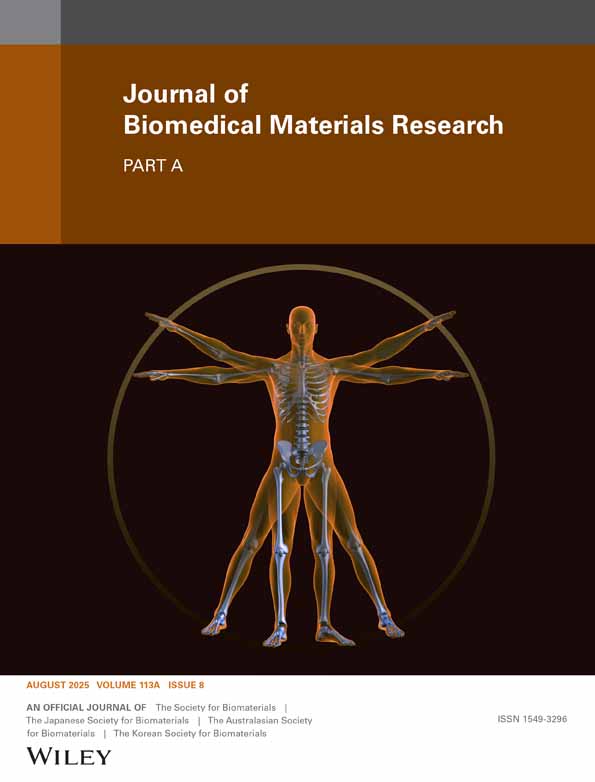Biocompatibility of a functionally graded bioceramic coating made by wide-band laser cladding
Abstract
The application of plasma spray is the most popular method by which a metal-bioceramic surface composite can be prepared for the repair of biological hard-tissue, but this method has disadvantages. These disadvantages include poor coating-to-substrate adhesion, low mechanical strength, and brittleness of the coating. In the investigation described in this article, a gradient bioceramic coating was prepared on a Ti-6Al-4V titanium alloy surface using a gradient composite design and wide-band laser cladding techniques. Using a trilayer-structure composed of a substratum, an alloy and bioceramics, the coating was chemically and metallurgically bonded with the substratum. The coating, which contains β-tricalcium phosphate and hydroxyapatite, showed favorable biocompatibility with the bone tissue and promoted in vivo osteogenesis. © 2008 Wiley Periodicals, Inc. J Biomed Mater Res, 2008




